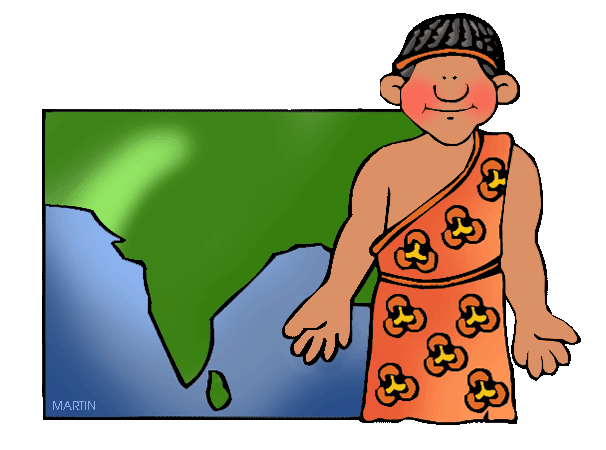
Ancient India
for Kids
What did the ancient Indians wear? What did they eat? Did kids play with toys? Did they go to school? This site shares daily life in three major time periods; the mysterious Indus Valley Civilization, the Vedic & Epics Periods, and the Gupta Empire, the Golden Age of Ancient India.
The Mysterious Indus Valley Civilization: In 1922, archaeologists made an exciting discovery - the remains of an ancient city from a previously unknown civilization. They named this city Harappa. Shortly thereafter, and with help from local guides, they found another city. They called this one Mohenjo-Daro. Since that time, archeologists have found over a thousand cities in the Indus Valley! That is a huge civilization. The more cities they found, the more amazed archaeologists became. They discovered that thousands of years ago, these ancient people built planned cities with straight streets, and brick homes with private baths. Some of their cities had a populations of 35,000 people. There was a sewer system and a water system that serviced each house in each city. Each house had two or three bedrooms, but there were no palaces. All of this was very unusual. There is no question that this was a very advanced civilization. How advanced is still under investigation. Archaeologists and historians believe these early people probably had a central government, but no one knows for sure. They believe it existed from about 3000 BCE to about 1500 BCE, which means it existed at the same time as the ancient Sumerian and ancient Egyptian civilizations. Did they know each other? Did they trade with each other? Based on the remains found at these sites, archaeologists believe they probably did.
The Vedic and Epics Periods: Aryan tribes swooped down from the north and conquered the people already living in northwestern India. Life became very different under Aryan rule. The Aryans were warriors. They had no written language. They did not have a central government. Instead, the people were divided into many clans. Each clan was ruled by an hereditary chief. The chief made the decisions, but only after hearing from the rest of the tribe. Anyone in that clan could speak at these meetings. But, when the chief made a decision after hearing from the people, they all obeyed. The Aryans were proud and fierce, and deeply religious. They had many gods and goddesses. They loved to tell stories around the central campfire at night. Some of these stories became the Vedas, or the sacred text of Hinduism, which today is a major religion. The Aryan people told the stories of the Vedas, over and over for a thousand years, until they were finally written down during the Gupta Empire (around 500 BCE.) It is the stories of the Vedas that tell historians a great deal about these ancient people.
The Gupta Empire: The Gupta Empire came next. The Gupta did have a central government, a ruling dynasty, assisted by many officials. This empire existed at the same time as the Roman Empire. The Gupta empire was made up of many Gupta villages. A Gupta village was a noisy place. The streets were narrow with houses on both sides. Businesses, selling all kinds of things, sold from stalls set up in the street. The smell of cooking filled the air as food vendors sold their wares. Animals wandered freely about. People were for the most part safe and prosperous during the Gupta period. It is called the "Golden Age" of ancient India because of that peace and prosperity. The people had religious freedom. Hinduism, brought to ancient India by the Aryans, was clearly the preferred religion, but Buddhism, another major religion, flourished as well. The empire provided simple health care for free. Writers, artists and musicians were paid to produce their art. The universities of Gupta were so famous that scholars from China came there to learn.
Ancient India was a fascinating place! These early people created many unusual inventions, told fabulous stories, and played some really neat games. Welcome to ancient India!
For Kids
The Ancient Indus Valley Civilization
The Aryans:
The Gupta Empire:
Ancient India: Many (many!) inventions and achievements
India Today: For Kids
Amazing animals that live in India
Stone Age, Bronze Age, Iron Age, Compared (for kids)
Quiz: Take the India Quiz, interactive with answers
Games: Play Free Interactive Online Games for Kids about India
Investigate Real Life Artifacts
For Teachers - Free use lesson plans and activities
Lesson Plans about Ancient India
Overviews, Units about the Country of India
Our thanks!
Mr. Donn and
Maxie's Always Something You Can Use Series
Written by Lin & Don Donn, Published by Good Year Books
Mr. Donn and
Maxie's Ancient History PowerPoints Series
Written by Lin & Don Donn,
illustrated by Phillip Martin, Published by Good Year Books